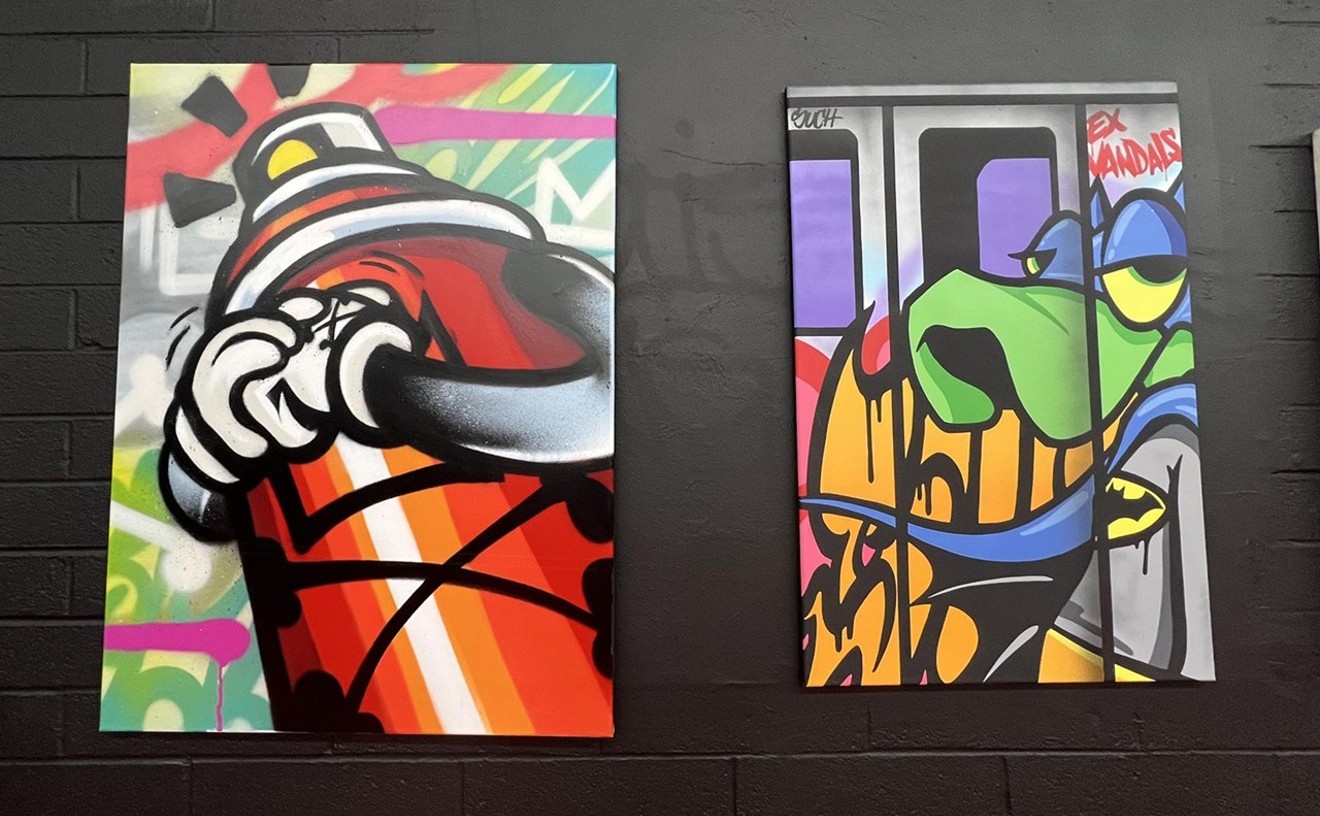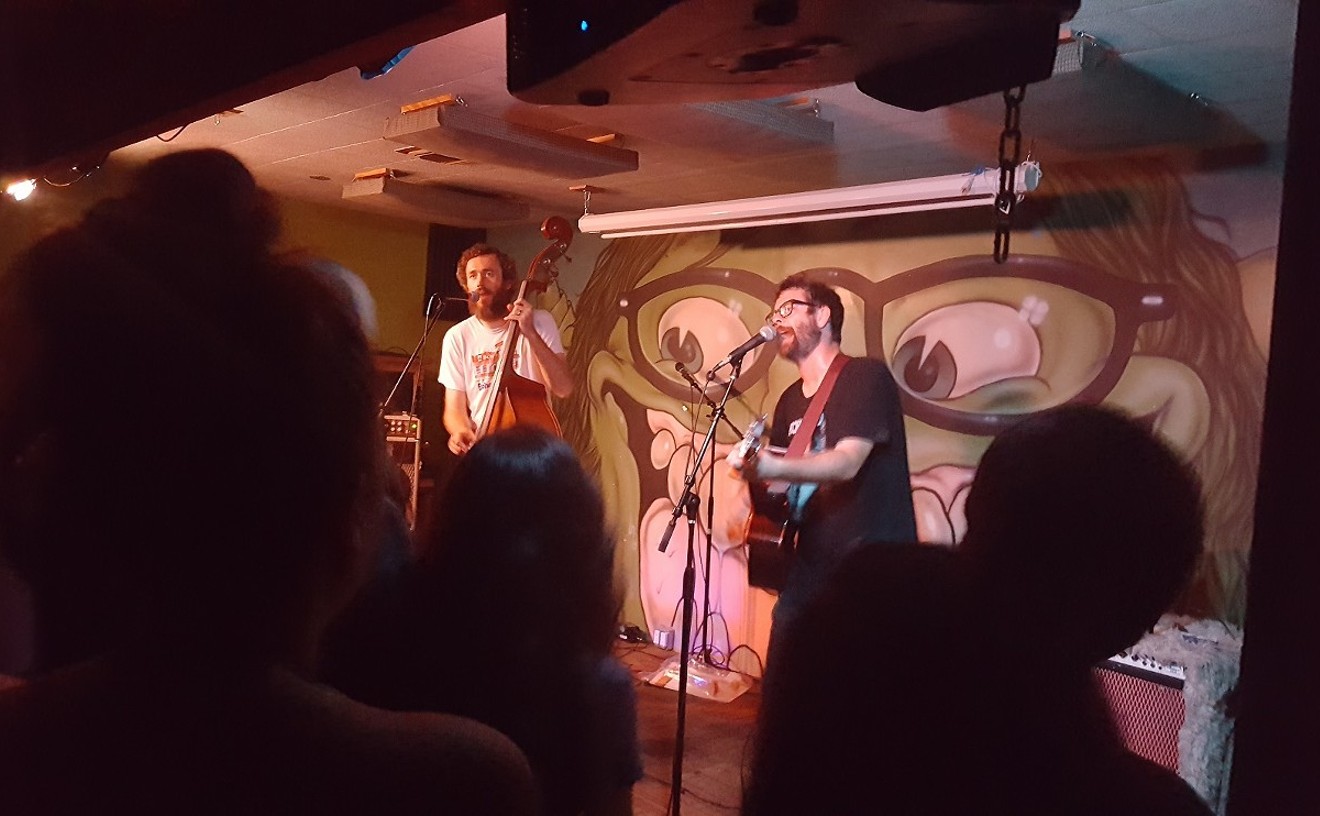About a dozen pigeons lounge near the Salvation Army in Tempe chapel's front door. They used to be the beat-up property's only decoration, aside from struggling patches of grass not meant for the arid climate or heavy foot traffic of the social services center on Myrtle Avenue and University Drive.
But as of this year, the property is revamped with rows of desert flora, several fruit trees, new soil, visual art, and a stone walkway leading up to a rest area with arbor and benches.
These creative and functional touches join the mourning doves thanks to Common Ground, a project headed by artist and Arizona State University professor Julie Anand that fuzes ideas of sustainability, landscape architecture, and public practice art and will wrap up this summer.
Last year, Anand applied for and received a grant of $5,000 from Herberger Institute for Design and the Arts. She used the money to launch Common Ground as the collaborative project in her Art and Ecology class at ASU.
"The goals were basically to make improvements that benefited both the Earth and the people," she said.
Anand, a photography professor and Senior Sustainability Scholar at ASU, said she conceived of the project after repeatedly walking past the property on her way to campus. She noticed several things that could be improved, including replacing the dying trees with new ones that would provide shade and edible fruit, getting rid of the Bermuda grass, which was dying from being trampled into the hard soil, and ditching the sprinklers, which are inefficient for desert plants in a desert climate.
Her students split into teams and drew up plans for certain parts of the property; the best ones were combined into a final drawing and submitted to City of Tempe. But the approval process took four months, and by that time, the semester had ended with the physical work barely started.
However, several core members--Darci Niva, Christopher Torrez, David Shannon-Lier, Sean Deckert and Sarah Quintana, to name a few--stayed on to finish Common Ground, along with a rotating cast of community volunteers [photos here].
Some details of the project still being worked on, Anand said, like installing new bike racks and student-created paintings above the chapel doors, but her pride in Common Ground is palpable as she gives a tour of the site.
"It's practically a city block," Anand said. "The fact that we kept all this to around $5,000 is kind of a miracle."
She is explaining the types of fruit trees (peach, plum, nectarine, tangerine) planted in front of the Salvation Army offices when a short man in slacks and a white dress shirt bounces out the door:
"Julie! You're not even going to say hi?"
The man is George Eastlick, and he has been the center's social services coordinator for seven years. Later, in his office, Eastlick said the new landscaping is a "big improvement" over how the Salvation Army looked before.
City of Tempe and clients all used to give Salvation Army a hard time about the outer appearance, he said--and the workers didn't like it either.
"We always wanted to get [renovations] going and make it look beautiful for the community, but we just don't have that type of money and the manpower," Eastlick said."
Eastlick rounded up volunteers from the community, many of them homeless, to pitch in with tasks like moving soil and planting trees. He said the volunteers are still proud of the work they put in every time they return to Salvation Army.
"Even though I didn't do as much as other people, whatever I did, I feel good about it," Eastlick said. "For me, and maybe for the students, the feeling is that you were a part of [...] something that's going to change the neighborhood, going to change our minds [about] what we can do with the community."
Students-artists and the homeless were "rubbing shoulders together" to complete the mini-project, said Darci Niva, the artist who headed the mural installation at Common Ground.
"Both groups [art students and the homeless] learned a lot about the other," said Niva, who also does homeless outreach for City of Tempe. "There was this new understanding, and it was art that brought us together."
The Salvation Army volunteers took a lead role in creating the mosaic on the building's East wall, which is related of a series by Niva called "The Tree of Life: Community Roots" currently on display at Night Gallery in Tempe Marketplace.
That idea came from a discussion with people involved with Urban Outreach, a non-profit that serves Tempe's homeless population. People who died of exposure in homeless community general receive a "pauper's burial," Niva said, meaning a wooden box in an unmarked grave and no ceremony.
Each leaf on the Salvation Army mosaic represents a member of the homeless community who has passed away in recent years.
Common Ground resembles a community service project, Niva says. But to her, the focus on building bridges between the arts, the university, and the community of people centered at Salvation Army in Tempe made Anand's nine-month class project something more.
"Some people contest the fact that this is art," Niva said. "But other people say the connection, the interaction itself is art. That's an important question: Is what's happening there just landscape architecture, or is it 'Art'? I think it's art."
Follow Jackalope Ranch on Facebook and Twitter and Pinterest.










